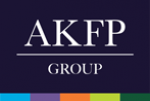For some investors, stocks and shares are just not enough. Much of the investment appeal lies in the possibility of owning something truly spectacular, rather than achieving maximum returns. It’s often this that propels people to enter the rather unusual asset class of fine art.
‘Girl with Balloon’, a painting by the Bristolian street artist Banksy, recently self-destructed at a Sotheby’s art auction after selling for £1.04 million. The anonymous artist had installed a shredder into the frame of the painting which was triggered when the painting was sold. However, only half the painting was shredded, with the other half remaining intact.
The winning bidder continued with the purchase, amid speculation that the value of the painting – well, what’s left of it – will rise because of its partial destruction.
Such is the world of art investments, profoundly different to the world of stocks and shares to say the least.
When investing in art, buying is the easy part. Selling your art is normally the challenge.
Galleries are typically reluctant to resell work they have already sold and top auction houses want to sell proven names. When you finally find somewhere to sell the artwork, you then have to negotiate an auction house consignment agreement which can be incredibly complicated to say the least.
Because stocks and bond prices constantly adjust when new information is released, it is illegal to trade on public information. With investing in art, things are totally different. Trading on non-public information is an important driver of returns.
In the lightly regulated art market, informed insiders will trade information to others in the hope of a sale or benefit to their careers. For instance, if an auction house specialist became aware of a large number of hard-to-detect forgeries by a certain artist it would be in their interest to alert their most loyal clients to strengthen relationships.
As an asset class, art is among the most illiquid. This means that it is hard to quickly convert value held in art into cash without sacrificing a significant portion of that value. Unless you own a painting by a renowned artist, it will be difficult to sell it quickly for its full value because of the art market’s emphasis on prestige and scarcity.
In fact, 1% of artworks that go to sale account for 64% of the total sale value in the art industry. The top names capture the vast majority of the rewards, with the rest selling for far less.
Throughout the art market there is little transparency. Around half the art market’s annual sales are off limits because they occur in the gallery market where sale prices are not disclosed to the public. What this means is that there is no investable art index. As well as this, because only pieces that have risen in value typically go to auction, looking at sales records can give art an artificially high return on investment.
Investing in art is complex. Conventional investing wisdom goes out of the window and needs to be replaced by detailed knowledge of a particular artist or art scene. Having a well established insider network is key to getting the essential information that determines the change of value of a particular artwork. This means that this type of investing is not for the faint-hearted and is mostly the reserve of those extremely passionate about art.



